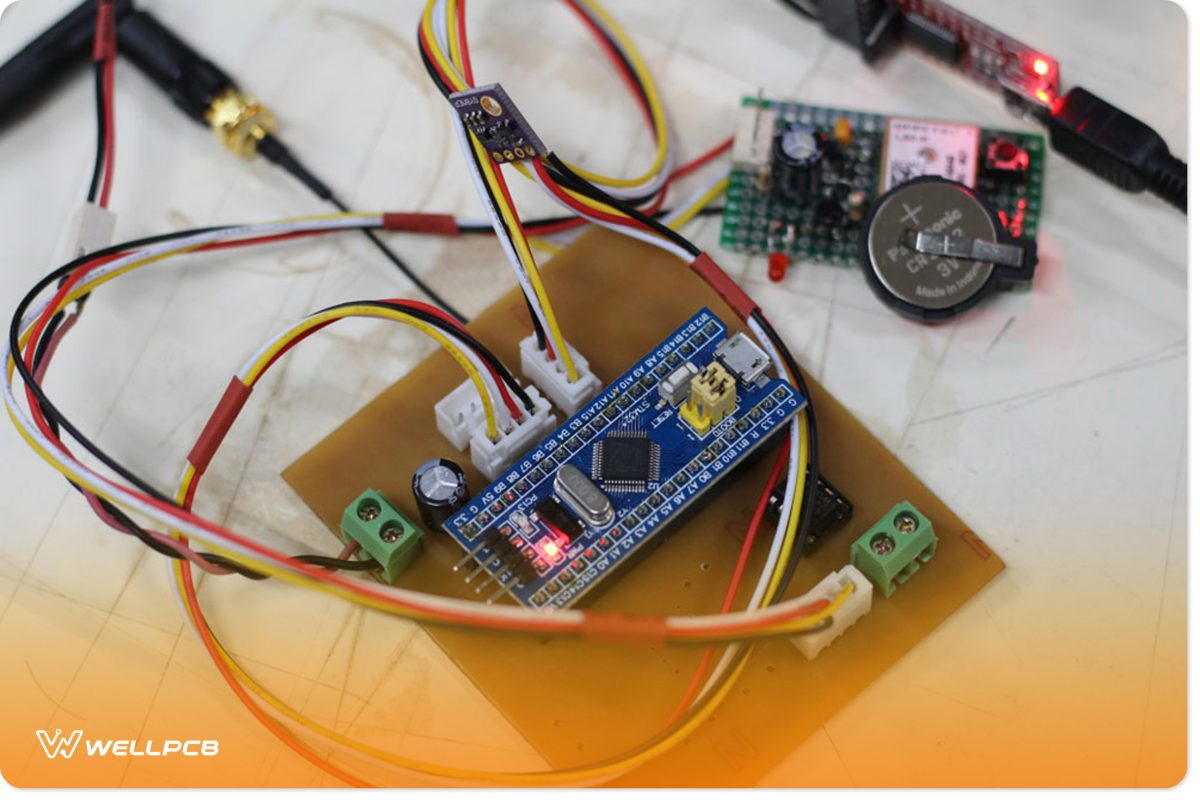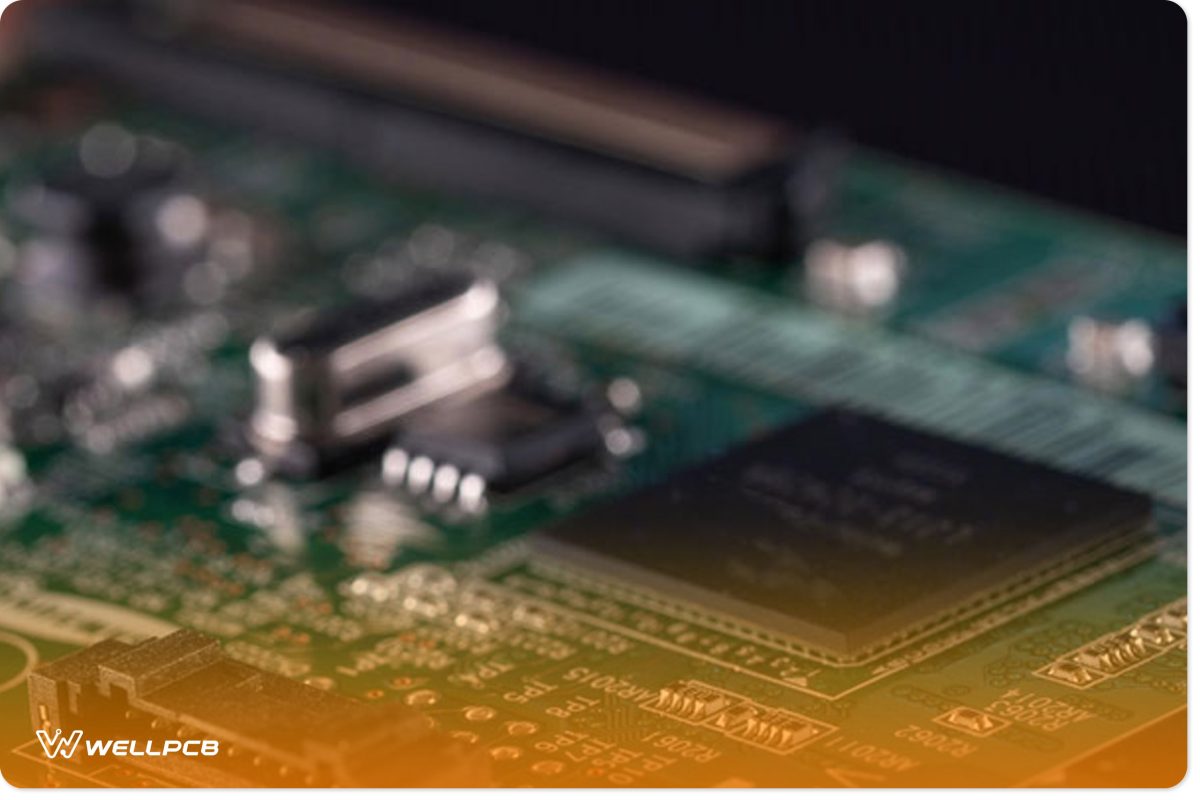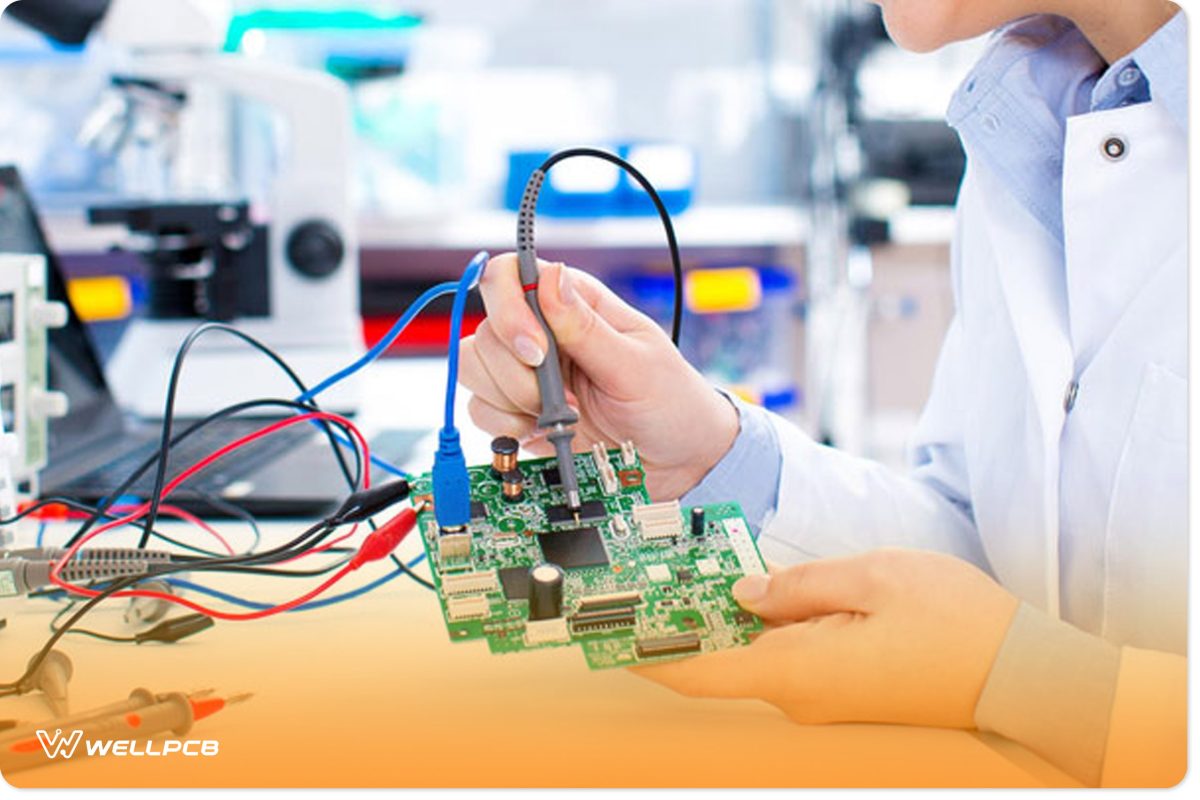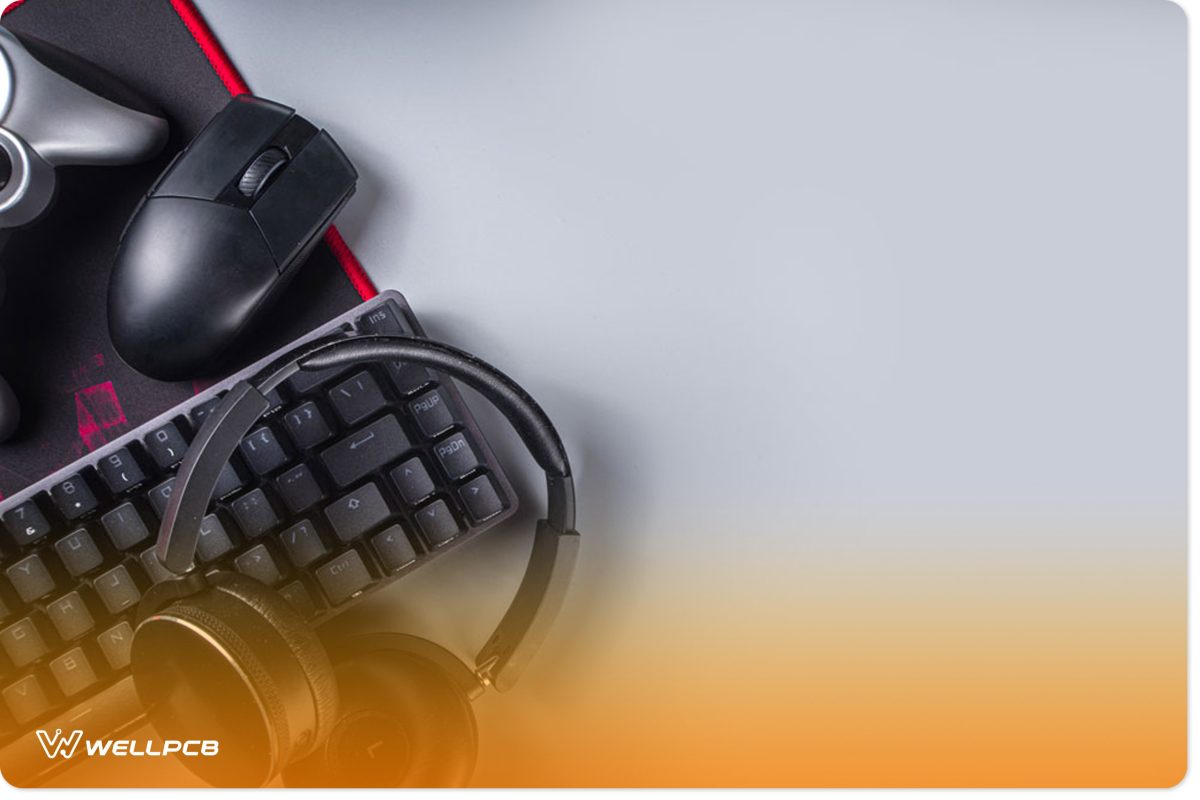Contents
PIC32 vs. STM32: Origin

Fig 1: STM32F103 Lorawan node for sense Temperature Humidity and GPS
Since 2006, STMicroelectronics has partnered with ARM to develop the STM32. The company sources its core IP from ARM. Other IPs include the STR7 and STR9 families based on ARM’s ARM7TDMI and ARM9E cores, respectively.
On the other hand, PIC is a leader in MCUs, especially for 8-bit devices. It’s a pioneer company that started working on the PIC1650 as early as 1975. They developed the Peripheral Interface Controller (PIC) to raise the 16-bit CP100’s input and output performance. Currently, their PIC32 boards have several onboard peripherals, including motor controls, UARTs, and programmable memory.
PIC32 vs. STM32: Packaging

Fig 2: Microcontroller PCB.
The PIC32 is the better microcontroller if you need Dual In-Line packaging (DIP). Both microcontrollers support Surface Mounted Device/Technology (SMD/SMT) packaging, enabling direct installation of all components to the PCB.
However, of the two MCUs, only the PIC32 supports the older Dual In-Line Packaging (DIP). Therefore, it enables you to interface the MCU through lines or a different socket.
PIC32 vs. STM32: Coding Tools
Here, STM32’s CubeMX is the clear winner.
Both companies provide coding assistance tools to aid with configuration and abstraction.
While CubeMX supports STM32, Harmony supports PIC32. However, the fact that both manufacturers offer coding tools does not imply that they are of comparable quality.
For quality and durability, CubeMX is the winner. It’s a powerful tool offering HAL (Hardware Abstraction Layer) and libraries. It’s easy to explore MCUs and initialize peripherals. Especially for the most recent release, the quality remains consistent.
On the other hand, Harmony has many bugs that weaken the tool’s appeal. Also, it has a habit of failing to compile immediately after a new release.
PIC32 vs STM32: Dev Tools
The STM32 is a clear winner due to its Nucleo development boards outperforming PIC32’s ICD (In-Circuit Debugger) boards. The Nucleo boards are cheaper, with the ST-LINK toolkit costing roughly $22. On the other hand, Microchip’s ensemble costs $200 or more.
But it doesn’t mean that the PIC32 isn’t an excellent option for tinkers. It’s probably cheaper building your dev board, as you may achieve faster processing speeds too.
PIC32 vs. STM32: Toolchain/IDE Support

Fig 3: A developer working on coding
Professional toolchain software supports the 32-bit lines from Microchip (PIC) and STM. For instance, SW2STM32, IAR, and Keil (the industry-leading software) support the STM32, while MPLAB X IDE supports PIC32. STM still offers free professional software, whereas PIC32 is the better C++ option for developers.
Both technologies, which support C and C++, depend on GCC for compilation; Microchip provides more comprehensive support for C++. However, STM acquired Atollic and now offers free professional toolchain software called TrueSTUDIO. At this point, it’s tough not to love STM.
PIC32 vs. STM32: Community

Fig 4: Engineer working with circuits
Microchip (PIC32) has an excellent community and hosts live webinars that facilitate direct communication between users and company engineers. Also, it offers its users free samples, has customer-oriented services, and allows active participation in ongoing project conversations. The PIC32 outshines the STM32 when it comes to community. STM may shine in broader applications, but Microchip’s community involvement wins.
PIC32 vs. STM32: Pricing
The PIC32 and STM32 are low-cost options that offer excellent solutions based on the task. Regarding pricing, the PIC32 is the better option for smaller quantities. They’re cheaper, especially when you buy just a few, making them great PICs that many engineers use to learn to program.
However, the STM32 is better if you prefer to buy it in bulk. If you’re ordering more than one thousand microcontrollers, we recommend the STM32, as you’ll get a better deal. It’s true if you’re buying from a China-based company due to the product’s popularity and availability.
When Should You Pick One Over the Other?

Fig 5: Computer peripherals
For better DIP packaging, C++ and community support, and easy-to-understand peripherals, go with the PIC32. If you need inexpensive development boards with greater availability, go with STM32. The board has better dev tools, IDE support, libraries, and HAL.
Conclusion
The STM32 has a fantastic range of microcontrollers with a wide array of tools and software. The PIC32 family has easy scalability, great memory options, and excellent performance. In addition, both boards are perfect 32-bit microcontrollers whose differences become evident with different applications. Finally, contact us for any clarification, comments, or suggestions.





